#Japanese tales
Explore tagged Tumblr posts
Text
To those Pokémon leaks and the specifically the myths. People do know that the moral of all those stories is that humans can be cruel?
In each one we have humans being the aggressors, that includes the Typhlosion one.
In the Ponyta story, it’s the rival eastern hunter who disrespects Pokémon, and hunted female Rapidash Ponyta. Specifically targeting the young, and his actions angered Rapidash and eventually led to his death at the hands of the western hunter. And I think the other point of this myth is to act in a sustainable way. Male Rapidash can breed with many females, but the females can’t, if you want to protect the population, you hunt the males. It’s why in real life, hunters are given a certain amount of “antlerless” moose tags.
For the Octillary Story it’s pretty cut and dry, human cruelty. Reading closely I’m not actually sure if the sex between the father and the Octillary was consensual or not, since the Octillary didn’t verbally consent, but it kept returning to the same spot perhaps to see the man? Regardless it’s sketchy as hell. The Son is where things are definite. The son was cruel to the Pokémon around him, injuring and maiming them for no other reason than his own enjoyment. He wasn’t hunting them for food, he was slaughtering them because he felt like it (tbh this reminds me a lot of big game hunters, who don’t intend to eat what they kill, who get the thrill of the hunt and a trophy. Which I believe disrespects the animal). The Son was also very much given a chance to repent. To forsake his old violent ways and become a better person but he refused and in the end it led to his death.
I would say the Slakoth story was very similar to the Octillary story in that we have a human being needlessly cruel to Pokémon to animals. And in having a child who was the same as the people she hurt she learned just how cruel she was. And the other women learned the same lesson when they killed her child, and she committed suicide. I get the vibe that this story has an anti-bullying message. To be honest it shouldn’t take having a child to realize one’s wrongs, but there it is.
And lastly we come to the Typhlosion story that everyone has been obsessing about. In a lot of ways it resembles old Japanese tales. I’ve read one in the past where a man meets a beautiful woman, and cheats on his wife with her, ending up married to this woman and having children. Eventually something breaks the spell over him and he finds out that he was living with a vixen underneath his own porch tbe whole time. The Typhlosion one follows a similar beat, that a woman stays with a man because he looks after her and takes care of her. She eventually finds out he’s a Typhlosion but she decides to stay with him in that moment instead of fleeing. The child they produce may or may not be out of rape, but reading the story it doesn’t seem like that. The way she sees the Typhlosion as her husband suggests that it was more consensual. When she wanted to return to the human realm and live as a human once more, she tried to shed her old life, but she wasn’t able to. And the humans saw that she was changed forever and were cruel to her and her child. Even her own family drove her out.
I guess one thing I want to say before I end this is. It seems like people here and on other places on the internet seem to take these stories as literal. Instead of what they’re supposed to be, which are myths. Myths and tales didn’t necessarily happen in the way told, or happen at all. The point of myths and tales is to provide insight into the world, to provide a story with some sort of lesson. It’s clear from the final version of these myths present in the DPP games that they reduced these myths to their base element to give the player an idea about the world. And myths make a world seem real.
#Pokémon#Pokémon mythology#teraleaks#myths#myth#myths and tales#stories#Ponyta#Rapidash#slakoth#octillery#Typhlosion#Japanese tales#me#mine#text post#my own theories
45 notes
·
View notes
Text
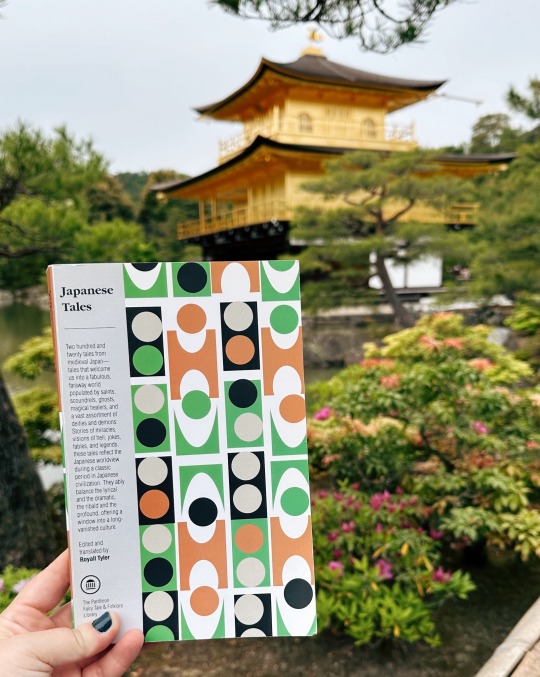
My partner got me Japanese Tales, edited and translated by Royall Tyler, for our trip to Japan this past spring. The volume accompanied me to Tokyo, to the old city of Kyoto, and to a hotel high above Osaka. In fact, it got relatively soaked in Kyoto rain on our visit to the Fushimi Inari shrine, so there's plenty of Japan still deep in its pages. But I didn't finish it in Japan—I finally went back and finished it this month.
Like other reviewers, I have to mention that yes, some of the tales are very dry, while others have strange translation choices, either including overly modern slang or even, Tyler mentions, "summarizing." But these are true folktales, not the spiced up modern fairytales, and Tyler tried to specifically gather tales that had been written down in olden Japan. So this collection really does show a glimpse into the stories that were once told "around the fire," and offers a fascinating look into Japanese folklore. Still, I think the volume could have been shortened—many topics were split in two but I found that Part I almost always had the best tales.
Favorites included different renditions of the girl born of a bamboo shoot, who would inspire Ghibli film The Tale of the Princess Kaguya; a couple ribald tales of tricks and caught-out affairs; many stories of everyday wisdom—the old man or chaotic stranger who turns out to be spirit or magical, my favorite of which was "The Old Mackerel Peddler"; a story where a bunch of men get their "members" stolen when they try to sleep with the magistrate's wife; some lovely fox spirit stories; and many wonderful stories where a person helps a helpless animal (usually a turtle) and gets their good deed well repaid.
Content warnings for sexual assault, pedophilia, animal cruelty, violence, ableism.
17 notes
·
View notes
Text

Japanese Tales
By Royall Tyler.
3 notes
·
View notes
Photo
La tristeza de esta escena es preciosa.

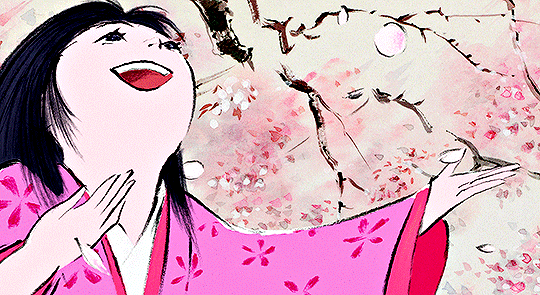


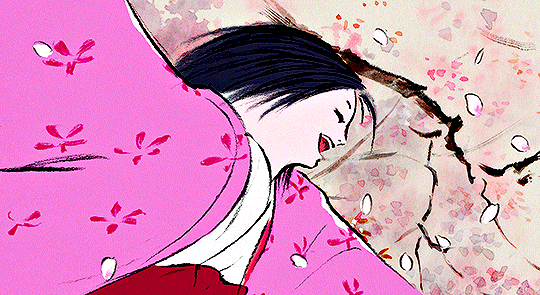
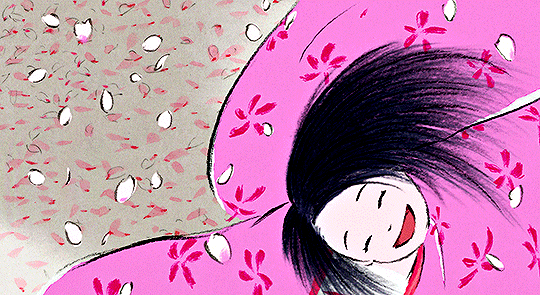
The Tale of the Princess Kaguya ‘かぐや姫の物語’ (2013) dir. Isao Takahata 🌸
#‘かぐや姫の物語’#studio ghibli#kaguya-hime no monogatari#the tale of the princess kaguya#el cuento de la princesa kaguya#japanese legends#japanese tales#moon princess#take no ko#isao takahata#joe hisaishi#japanese animation#animación japonesa#ghibli gifs
2K notes
·
View notes
Text
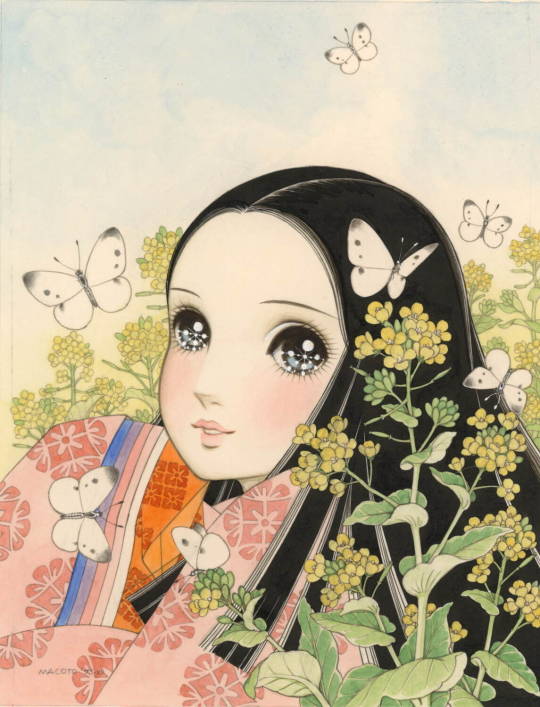
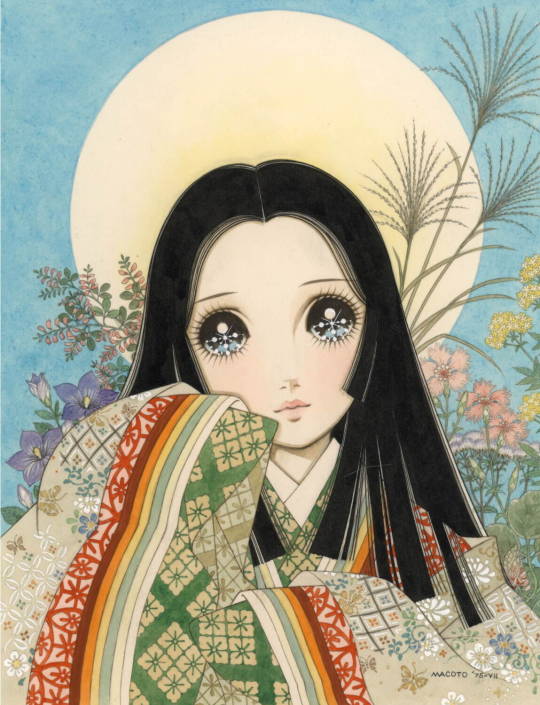
The Lady who Loved Insects (1976) and Princess Kaguya (1975) by Takahashi Macoto.
#高橋真琴#macoto takahashi#takahashi macoto#vintage shoujo#retro shoujo#vintage illustrations#japanese fairy tale
2K notes
·
View notes
Text
Suddenly, Horse Dung
One evening an imperial bath attendant (a woman) went off on a visit, taking her little son Akoboshi and some friends of his along with her. As twilight fell the boys began a wrestling game outside the house. Suddenly something like a huge curtain (they never did get a good look [at] it) came down over them from the wall they were playing under, and Akoboshi disappeared. The other boys ran off, terrified. They were afraid to tell anyone what had happened.
The woman was very upset when she missed her son and hunted everywhere for him, but in vain. In the middle of the third night after his disappearance there was knocking on her gate. Not daring to open it, she managed to cry out, "Who's there?"
"We want to give you back your son! Open up!"
She was too frightened to obey. Next, she heard voices on her roof and a roar of laughter. Something fell, or was thrown, to the ground. Fighting back her terror, she lit a torch and went for a look. It was Akoboshi, lying limp and still. The only sign of life in him was that he blinked.
She called a healer and his medium. When the medium went into her trance, Akoboshi was suddenly covered with some sort of brownish stuff. It turned out to be horse dung, three bucketfuls of it. Akoboshi never told what had happened to him, but he revived and was still alive ten years or so later.
This happened around 1215. I got this from someone who was there at the time.
- “Japanese Tales”, Royall Tyler
1 note
·
View note
Text


𖦹 𝔧𝔲𝔫𝔧𝔦 𝔦𝔱𝔬 𖦹
#junji into#horror#anime#horror anime#macabre#creepy#junji ito manga#junji ito maniac#Japanese tales of the macabre#junji ito tomie#tomie#goth#gothic#horror manga
701 notes
·
View notes
Text










⌕ junji ito art - moodboard.
like or reblog if you save/use. 🤍
#mboard#junjiito#1uzumaki#tomie#junji ito#junji itō#junji ito japanese tales of the macabre#kirie#kirie icons#kirie goshima#tomie kawakami#tomie icons#uzumaki icons#whispering woman#junji ito art#junji Ito aesthetic#junji ito manga#anime layouts#anime aesthetic#horror#horror core#horror aesthetic#anime icons#anime#manga#animes layouts#manga icons#twitter layouts#anime packs#manga layouts
676 notes
·
View notes
Text

Tokyo, Japan 🇯🇵
#tokyo#japan#japanese#traffic#big city nights#big city dreams#big cities#big city life#august#summer#nightlife#city life#citas#cityscape#city#skyline#aerial#aerial shot#photograph#photography#toya's tales#style#toyastales#toyas tales#art
527 notes
·
View notes
Text
Typhlosion fans: I can't believe people are being gross about my fav!!
Vaporeon, Gardevoir, Hypno, Salazzle, Goodra, and Lopunny fans:
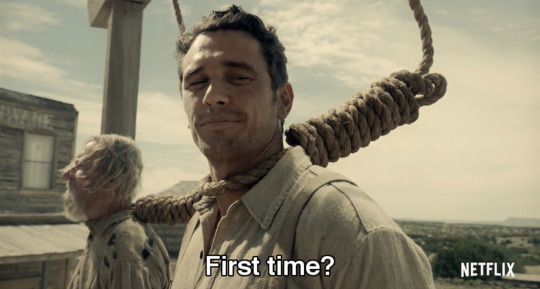
#pokemon#pkmn#pokemon leaks#outdesign posts things#side note: these leaks have taught me that the large majority of Pokemon fans know nothing about typical japanese folk tales#like gasp! the japanese game devs wrote folklore about typical japanese folklore things#EDIT: sorry for fogetting you salazzle fans I've updated the post in your honor#greatest hits
402 notes
·
View notes
Text
I don't want to act like a snob, but, y'all... really don't read old fairy tales or mythology, do you...? You only know the sanitized, bloodless Disney versions? People get cut to pieces (Cinderella/Ashputtel, The Red Shoes), women are abducted to be wives (an upsetting practice that continued until very recently, still practiced in some countries today—horrible, but part of life that found its way into stories, like The Seal's Skin), and magical talking animal husbands / wives (The Crane's Return of a Favour; East of the Sun, West of the Moon, etc.) abound in old mythology. Kids have been raised hearing these stories and not thinking about sex for centuries...
Humans marrying Pokemon in the ancient past was frankly stated in the Japanese version of DPPt. The English version rightly assumed English-speaking fans won't take it and reworded it from used to marry to used to eat at the same table (some euphemism!)
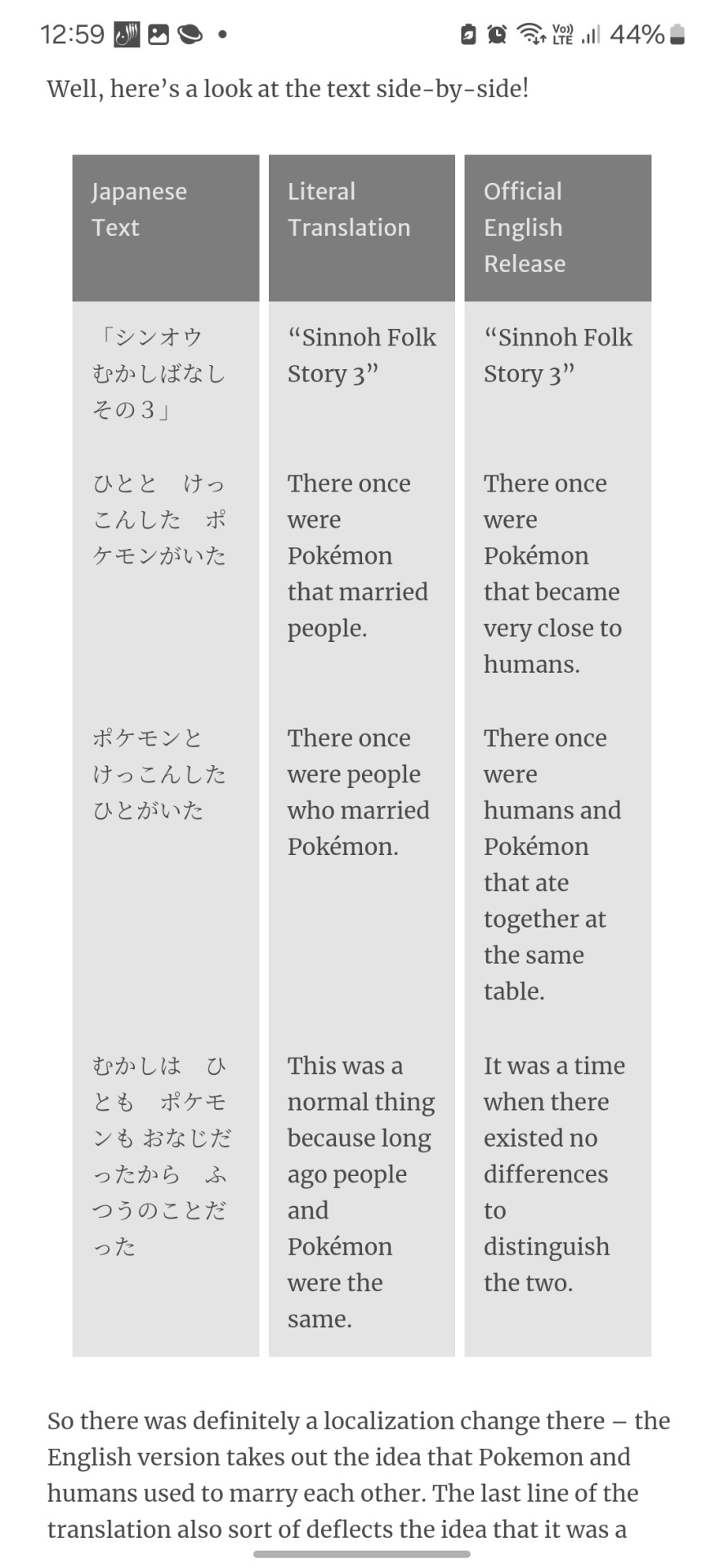
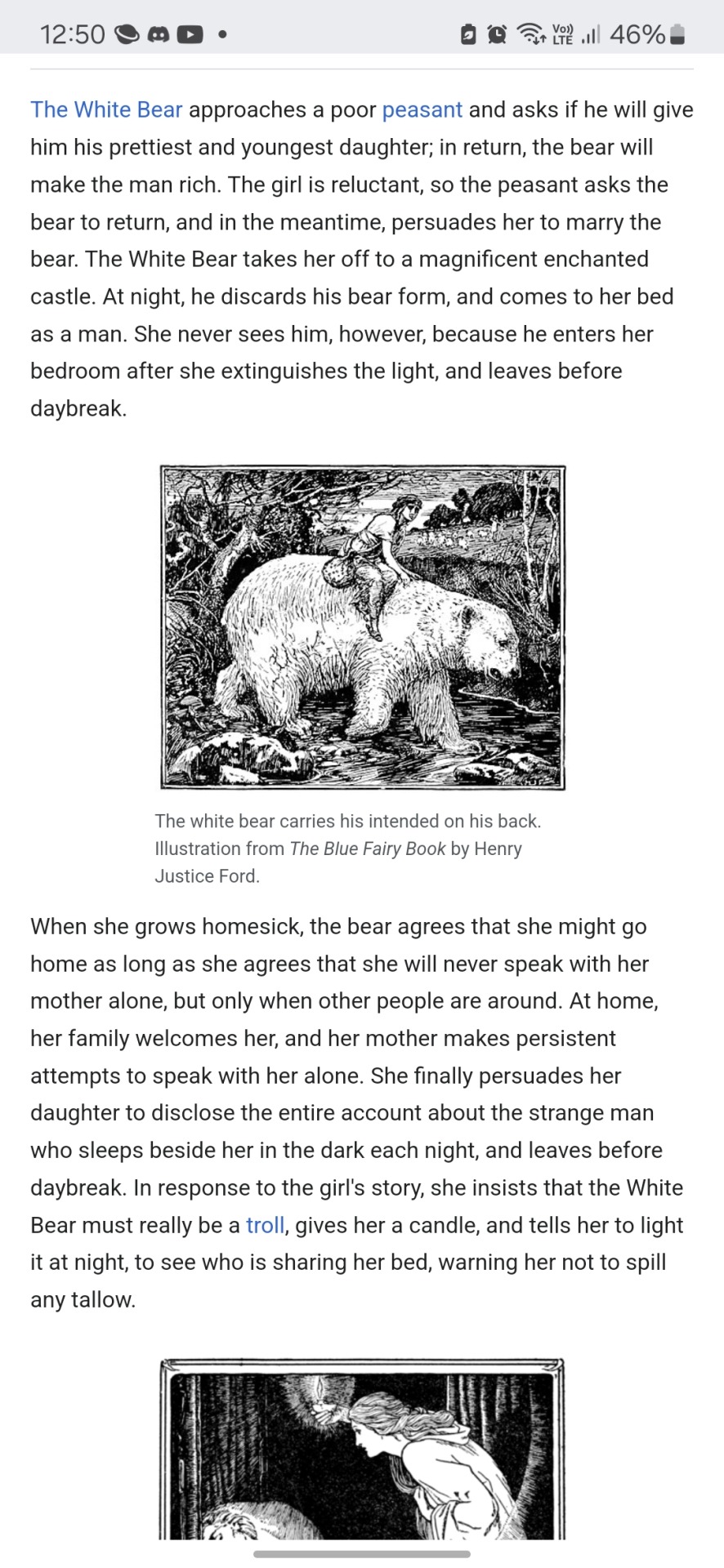
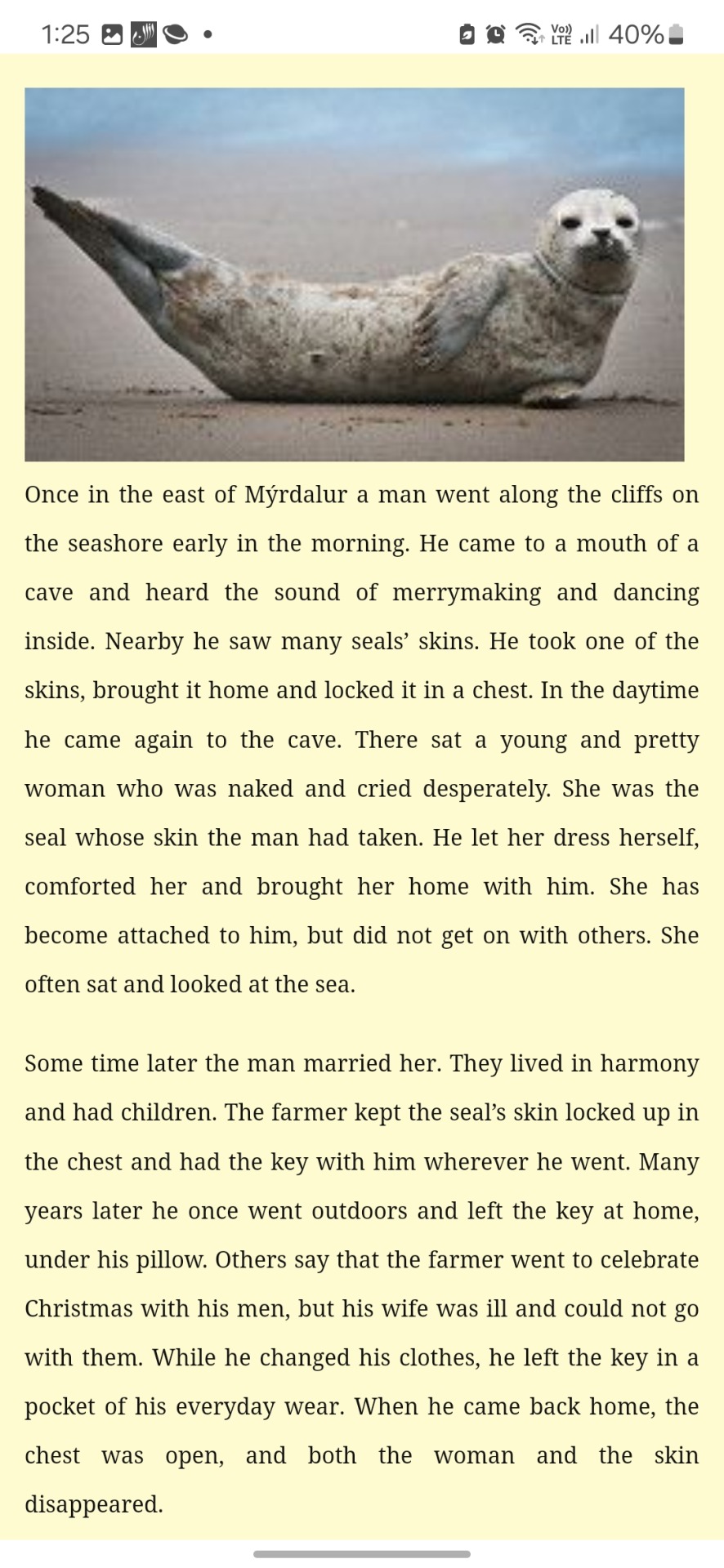
The Typhlosion story is no different from western stories like East of the Sun, West of the Moon (the way she was advised not to look at him reminded me of that) or The Seal's Skin (selkies cannot transform and return to the sea without their pelts—the abducted wife leaves her half-human child on land, escaping with her pelt when she finds it... the half-human, half-Pokemon children are bullied by their pelts being thrown on them to transform them against their will for cruel human amusement..)
The bloody myth about the boy with the sword is Veilstone's myth, but told in detail, right down to the Pokemon exacting a toll from him for how he maimed and slew them for amusement.
A man unknowingly marries a transformed-into-human form Froslass he met once before in Pokemon Legends: Arceus and she flees when he finds out what she was... it's based on a tale about the yuki-onna, the folkloric snow woman Froslass is based on.
youtube
[music]
#Pokemon#teraleak#Pokemon Leaks#fairy tales#I don't wanna act like a snob but DANG you guys are that divorced from culture PLEASE read Grimm's Fairy Tales Hans Christian Andersen#Greek myth Celtic folklore Japanese folklore—anything!!!#I get being horrified by the implications of rape * definitely but those elements are only perceived with knowledge of adult matters#fairy tales always had some darkness to them that was gradually sanitized out in modern retellings#Youtube
391 notes
·
View notes
Text
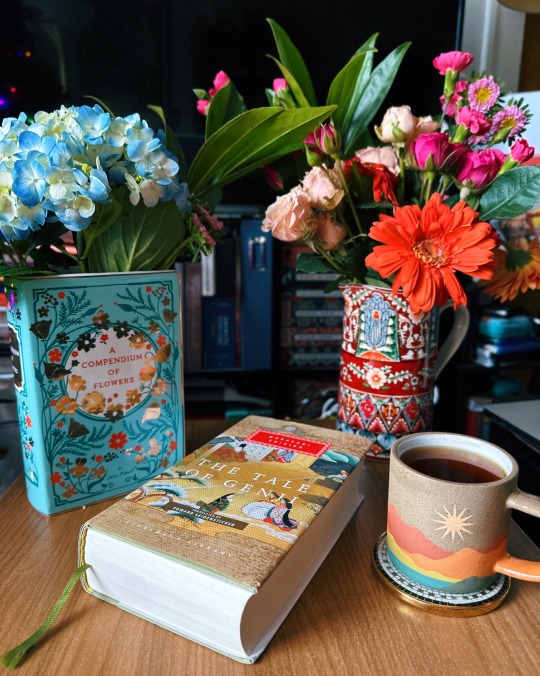
Genji is not a perfect person, but there’s a purity to him, a beauty that’s clearly meant to be lauded, particularly in contrast to later chapters. He’s in love with love, a true romantic, and his sometimes unwise affairs are motivated by a true sense of love. He never abandons one of his lovers, which in this time is crucial. No matter the shame it brings to himself, he tries to find a way to honor the women he’s fallen for. He’s charming. No one can not love him, or ultimately forgive him his faults.
The age of Tale of Genji had strict rules of romance—of how flirtations worked (largely intermediaries and poetry), of how commitments worked, of how aloof vs. present it was appropriate to be (it’s good to commit but bad to hoard or become jealous). It was possible to love too much. Genji is accused of this, but he always remembers to care for the people he is responsible for—once he grows up that is.
Early in the text, he neglects his wife, and he also neglects “the Rokujo lady.” The Rokujo lady becomes so jealous and enraged that her spirit begins to sicken his wife. This ghost returns more than once over the course of the text. She has grown sick from obsession and neglect, and Genji pays the price for it. It’s part of what motivates him to always care for the women he romances for the rest of his life.
Later, in the “Uji” chapters, young Kaoru and prince Niou also love too much. Niou is impulsive like Genji but also flighty, and Kaoru is serious like Genji but also obsessive. Both men pursue the women at Uji with insistence that the text can’t quite forgive as it could for Genji. Both, somehow, go too far—perhaps in their attempts to hoard, or in their impatience.
2K notes
·
View notes
Text
BLs to Recommend to Your Queer Friend
I put these in each bracket in levels of accessibility, as in “how easy I think they are for a non-BLer to enter into” without explanations of genre needed.

Bleeding Heart Romantics
Semantic Error
Bad Buddy
A Tale of Thousand Stars
Earnest Queer
The New Employee
My Ride
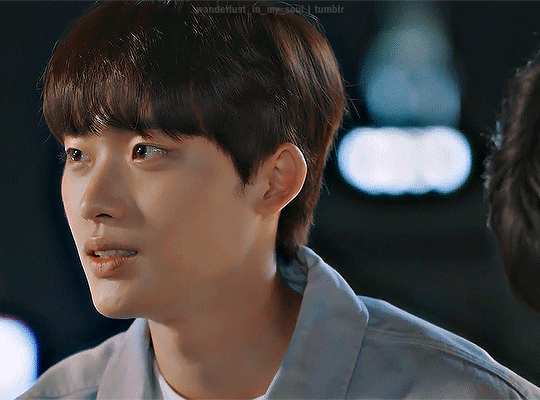
Drama Llama Indoor Kids
Our Dating Sim
Cherry Magic
My Love Mix Up
Repressed Arthouse Aesthetic
Old Fashion Cupcake
Love Life On The Line
Restart After Come Back Home

Hot Mess Gay Babies
The Eighth Sense
Moonlight Chicken
Hawt Mess Kinky Fuckers
Bed Friend
KinnPorsche
My Beautiful Man
Bonus Round:
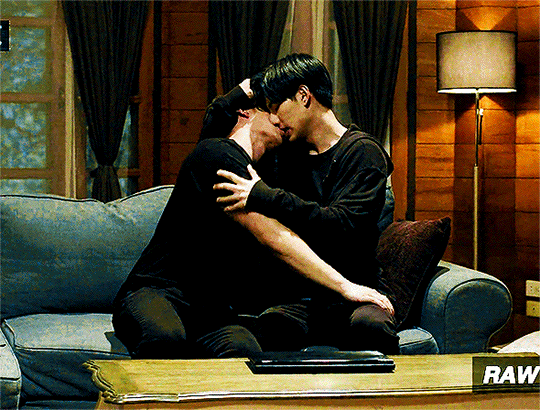
Adventure bois with a side of queer
Manner of Death
Not Me
Long Time No See
3 Will Be Free
He’s Coming To Me
From @mestizashinrin who asked me:
“recommend a queer person to first start in BL”
(source)
#asked and answered#recommended bl#top tear bl#queer bl#gay bl#Semantic Error#Korean bl#Bad Buddy#thai bl#A Tale of Thousand Stars#Old Fashion Cupcake#japanese bl#Love Life On The Line#Restart After Come Back Home#Our Dating Sim#My Love Mix Up#The Eighth Sense#Moonlight Chicken#KinnPorsche#Manner of Death#Long Time No See#3 Will Be Free#He’s Coming To Me
2K notes
·
View notes
Text
In Tokyo, sixteen-year-old Nao has decided there's only one escape from her aching loneliness and her classmates' bullying, but before she ends it all, Nao plans to document the life of her great-grandmother, a Buddhist nun who's lived more than a century. A diary is Nao's only solace—and will touch lives in a ways she can scarcely imagine. Across the Pacific, we meet Ruth, a novelist living on a remote island who discovers a collection of artifacts washed ashore in a Hello Kitty lunchbox—possibly debris from the devastating 2011 tsunami. As the mystery of its contents unfolds, Ruth is pulled into the past, into Nao's drama and her unknown fate, and forward into her own future. Full of Ozeki's signature humour and deeply engaged with the relationship between writer and reader, past and present, fact and fiction, quantum physics, history, and myth, A Tale for the Time Being is a brilliantly inventive, beguiling story of our shared humanity and the search for home.
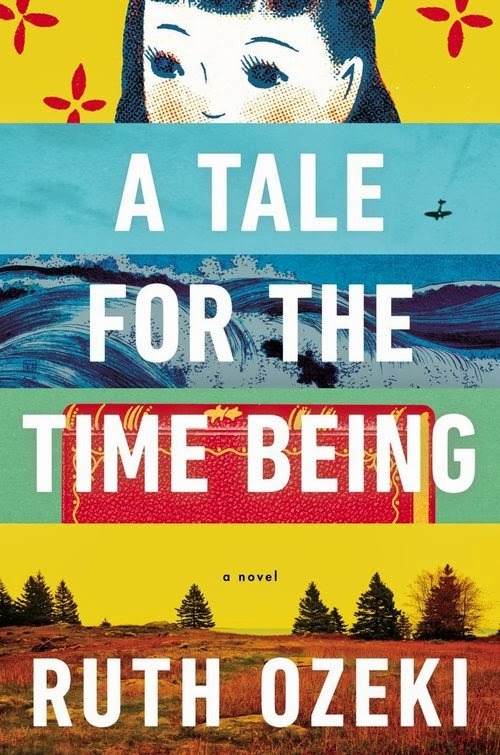
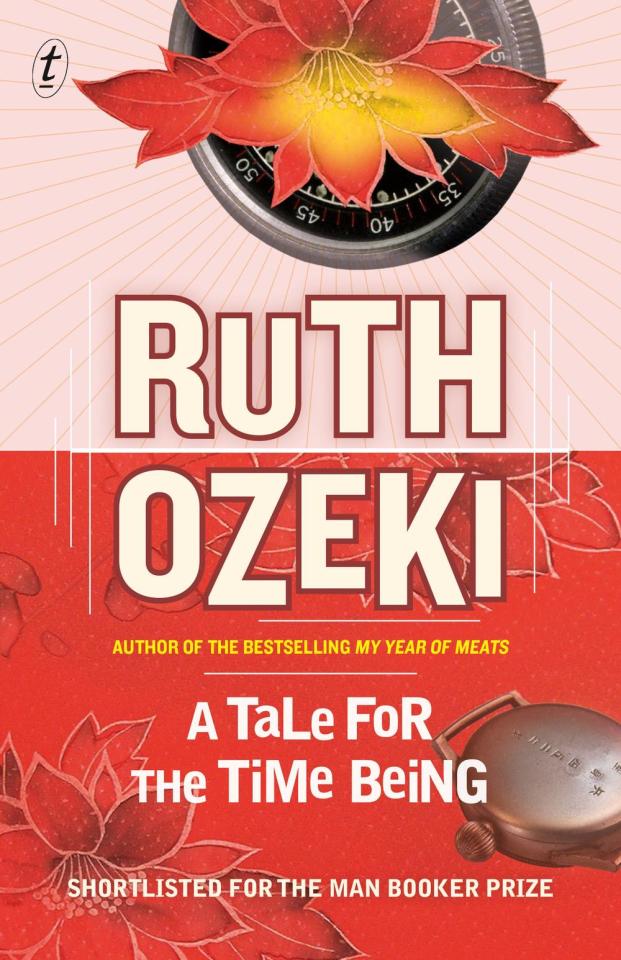
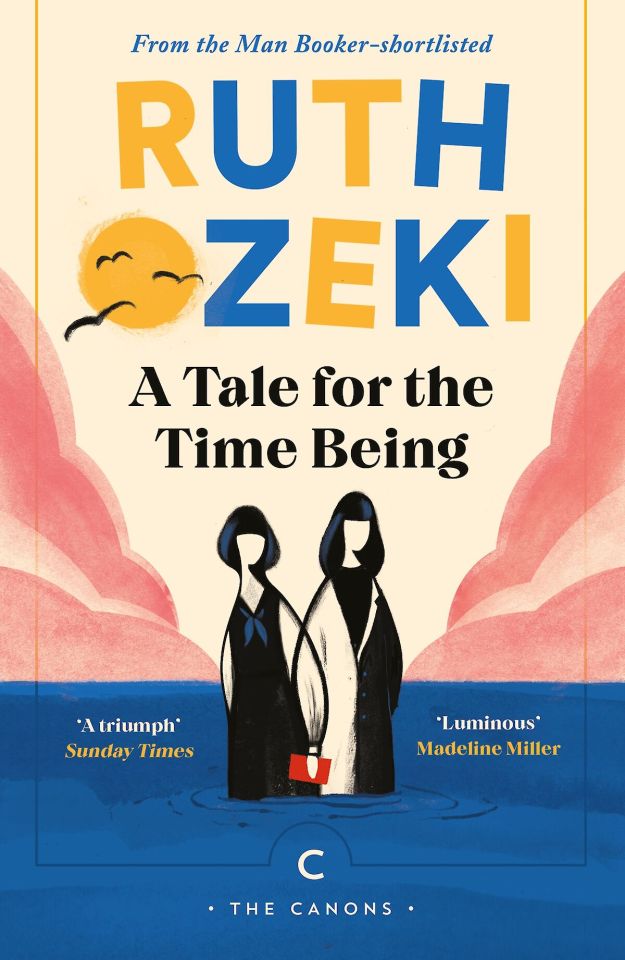
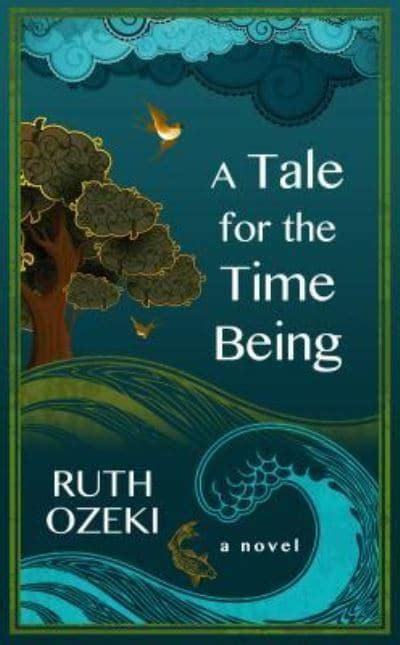
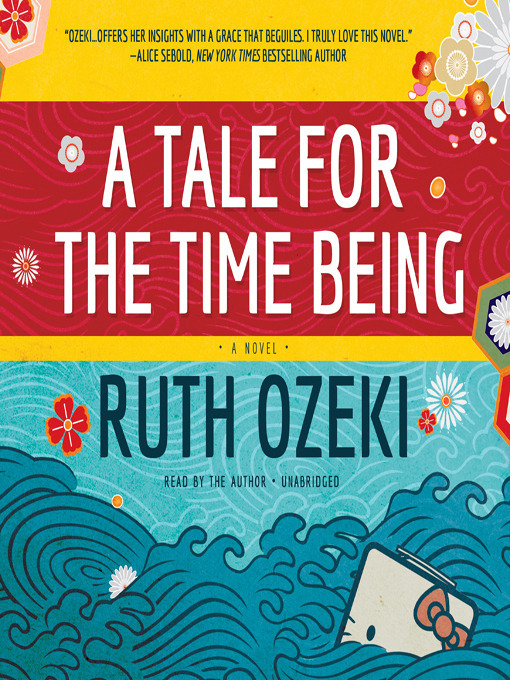
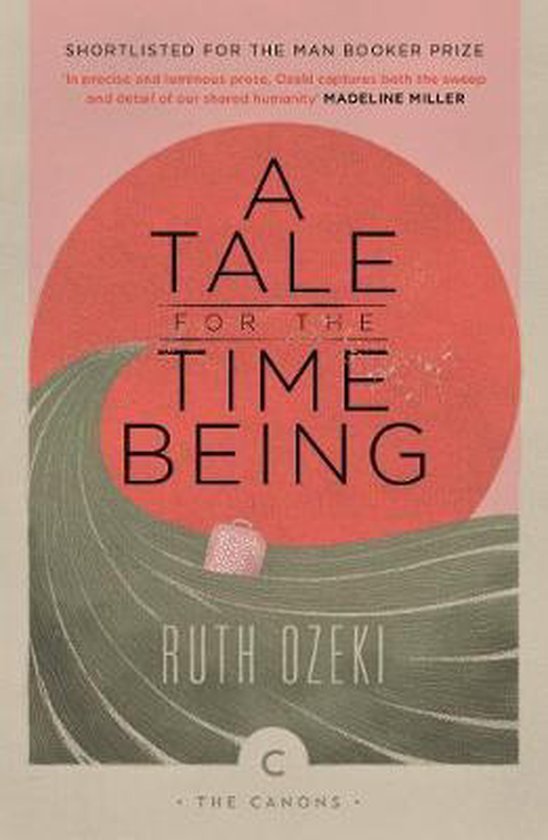
#book: a tale for the time being#author: ruth ozeki#gene: japanese literature#genre: magical realism#genre: historical fiction#genre: literary
248 notes
·
View notes
Text
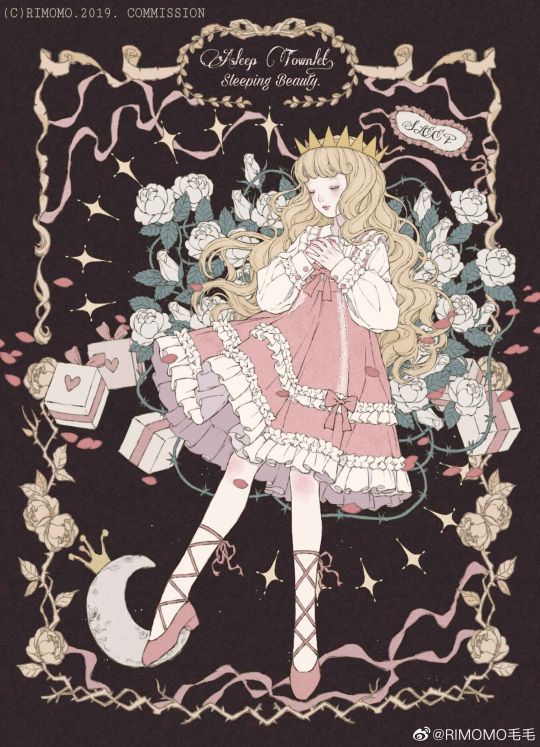
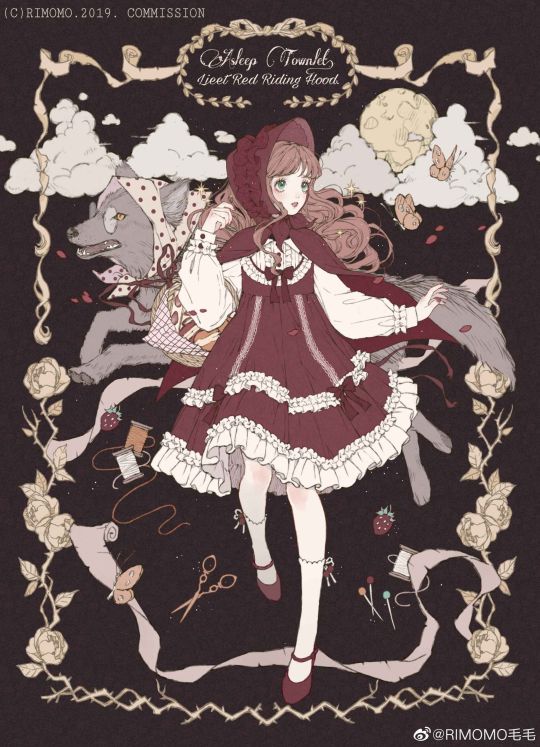
130 notes
·
View notes
Quote
Tateyama, a mountain in Etchu province, has been known since antiquity for its hells. The rugged, sweeping landscape there is desolate, and countless boiling springs gush from deep fissures in the ravines. Even a huge boulder resting on one of these cracks may be set rocking by the water that surges up irresistibly around its base. The heat is terrible, and you come eventually to a column of endless fire. In one valley of this hellish waste there is a waterfall over a hundred feet high that looks like a vast expanse of white cloth.
“Japanese Tales”, Royall Tyler
0 notes